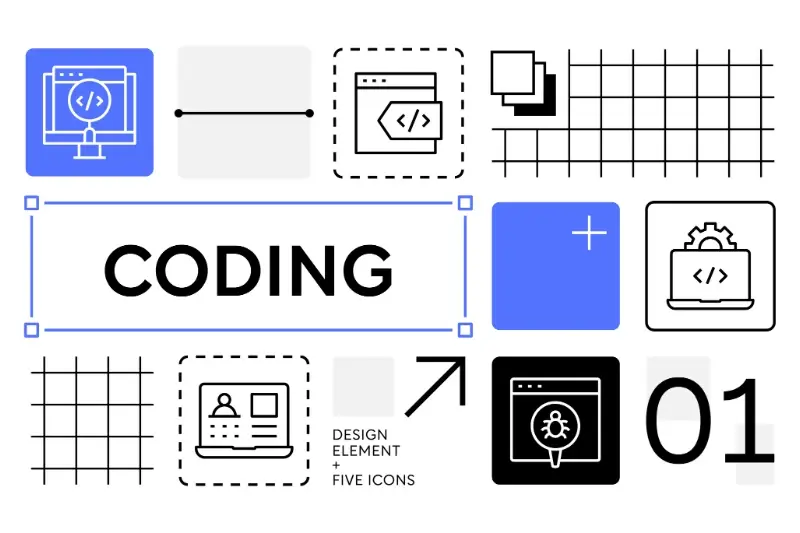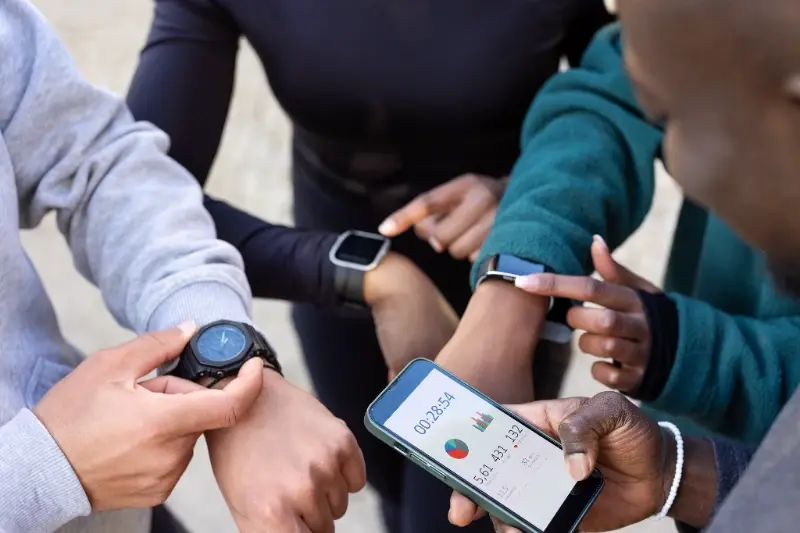7 Real App Disasters That Could Have Been Prevented With Proper Cover
Mobile app failures happen more often than most developers would like to admit, and when they do, the financial consequences can be devastating. Over the years, I've watched countless businesses pour their hearts and savings into mobile app projects, only to see them crumble under the weight of technical disasters, security breaches, and user experience nightmares that could have been prevented with the right planning and protection.
The mobile app industry moves fast—sometimes too fast for its own good. Developers rush to market, skip testing phases, and cut corners on security to meet tight deadlines. Users expect perfection from day one, and when apps fail to deliver, the backlash is swift and merciless. What many don't realise is that behind every app disaster lies a trail of financial destruction: refunds, legal fees, lost revenue, damaged reputations, and insurance claims that could have been avoided.
The difference between a minor hiccup and a complete business failure often comes down to whether you've prepared for the worst-case scenario
Risk management isn't just about writing better code or having backup servers—though those help. It's about understanding that mobile apps operate in an unpredictable environment where anything can go wrong, from data breaches to payment system failures. The stories you're about to read aren't just cautionary tales; they're real examples of what happens when proper insurance coverage and risk planning take a back seat to speed and ambition. Each disaster teaches us something valuable about protecting our apps and our businesses before it's too late.
The Healthcare App That Lost Patient Data
A major healthcare app that millions of people trusted with their most sensitive information suffered a catastrophic data breach that exposed patient records, medical histories, and personal details. The company had stored all this information without proper encryption and—here's the kicker—they didn't even know the breach had happened for months.
When patients downloaded the app, they shared everything from their medication lists to their mental health records, believing this information was safe. The app developers had focused on making the interface look sleek and modern, but they'd completely ignored the security infrastructure needed to protect such sensitive data.
What Went Wrong
The problems started from day one. The development team rushed to launch without implementing basic security measures, and their servers were essentially wide open to anyone who knew where to look. They stored passwords in plain text; they didn't encrypt patient data; and they had no monitoring systems to detect unusual activity.
- Patient medical records were stored without encryption
- Database passwords were saved as plain text
- No security monitoring systems were in place
- Backup systems failed to work properly
- Staff had no training on data protection protocols
The breach affected over two million users before it was discovered—and only then because a security researcher stumbled across the exposed data whilst conducting unrelated research. By that point, patient information had been sitting unprotected online for eight months. The company faced massive fines, lawsuits from affected patients, and ultimately had to shut down completely.
This disaster could have been prevented with proper security planning, regular penetration testing, and compliance with healthcare data protection regulations from the start.
When a Banking App Failed During Black Friday
Black Friday represents the biggest shopping day of the year, when millions of people frantically check their bank balances and transfer money between accounts. One major bank learned this the hard way when their mobile app crashed spectacularly during the shopping frenzy—leaving customers unable to access their accounts when they needed them most.
The bank's mobile app couldn't handle the sudden spike in users. What normally saw steady traffic throughout the week was hit with ten times the usual volume in just a few hours. The servers buckled under pressure, payment processing ground to a halt, and the app became completely unusable. Customers couldn't check balances, couldn't transfer funds, and worst of all—couldn't complete their Black Friday purchases.
Social media exploded with angry customers sharing screenshots of error messages and complaining about missed deals. The bank's reputation took a serious hit, and they faced potential regulatory fines for service disruptions. Some customers even switched to competitor banks after the incident.
Load testing your mobile app before peak periods isn't optional—it's absolutely necessary for any app handling financial transactions or high-volume events.
The Real Cost of Failure
This wasn't just about technical problems; it became a major business crisis. The bank faced multiple challenges that proper mobile app insurance could have helped address:
- Lost revenue from failed transactions
- Emergency server costs to restore service
- Legal fees from potential regulatory action
- Marketing spend to rebuild damaged reputation
- Customer compensation payments
The incident shows how quickly a mobile app disaster can spiral into a company-wide crisis, particularly when risk management planning falls short during predictable peak periods.
The Food Delivery Service That Couldn't Handle Peak Hours
Friday night rolls around, and everyone wants their favourite takeaway delivered. It's the busiest time of the week for food delivery apps—and that's exactly when one major platform completely crashed. Users couldn't place orders, restaurants couldn't receive them, and delivery drivers had no idea where they were supposed to go.
The problem wasn't a mystery. The company knew Friday and Saturday evenings were their peak times, but they hadn't prepared their app's infrastructure to handle the demand. When thousands of hungry customers tried to order at once, their servers simply couldn't cope. The app became slower than a snail, then stopped working altogether.
What Went Wrong Behind the Scenes
The technical issues were actually quite straightforward to understand. The app's database couldn't process all the simultaneous requests—think of it like a narrow doorway with too many people trying to squeeze through at once. Their payment system also failed because it wasn't designed to handle high transaction volumes.
But here's the kicker: this wasn't a one-off incident. It happened every weekend for months. Customers got frustrated and switched to competitors, restaurants lost money, and the company's reputation took a serious beating. Social media was flooded with angry complaints.
Simple Solutions That Could Have Prevented Disaster
The fixes weren't rocket science. Understanding what causes mobile apps to crash and how to prevent it would have revealed these capacity issues immediately. Here's what they should have done:
- Test the app with simulated peak traffic loads
- Set up scalable server infrastructure that automatically adjusts to demand
- Create backup systems for payment processing
- Monitor performance in real-time during busy periods
With proper testing and infrastructure planning, this food delivery service could have turned their busiest hours into their most profitable ones instead of their biggest headache.
Social Media Platform's Privacy Breach Nightmare
Privacy breaches in social media apps are becoming far too common—and they're getting expensive. One popular platform discovered hackers had accessed millions of user profiles, including private messages, photos, and personal information. The breach went unnoticed for months before being discovered by their security team.
The real nightmare began when users started filing lawsuits. Millions of people were affected, and many demanded compensation for their compromised data. The platform faced regulatory fines from multiple countries, each with different privacy laws and penalties. Their legal bills alone reached into the tens of millions.
The Business Impact
User trust disappeared overnight. People deleted their accounts in droves, and advertisers pulled their campaigns. The company's share price dropped by 40% within a week. Revenue took months to recover, and some users never came back.
We thought our security was bulletproof, but one small vulnerability in our mobile app's code led to the biggest crisis in our company's history.
What made this worse was the lack of proper insurance coverage. The company had general business insurance, but nothing specific for data breaches or cyber attacks. They had to pay all legal fees, compensation claims, and regulatory fines from their own pocket. A comprehensive mobile app insurance policy would have covered the legal costs, regulatory penalties, and even business interruption losses. The total cost of this breach exceeded £50 million—money that could have been largely protected with proper risk management and insurance coverage tailored for mobile app businesses.
Gaming App's In-App Purchase Scandal
Gaming apps can be goldmines for developers—but only when the money comes from legitimate purchases. One popular mobile game learned this lesson the hard way when their in-app purchase system became a complete nightmare for families worldwide.
The game was designed for children but included expensive virtual items that could be bought with real money. Sounds harmless enough, right? Wrong. The purchase process was so easy that kids were accidentally spending hundreds of pounds on virtual coins and power-ups without their parents knowing. No password confirmations, no spending limits, no clear warnings about real money being used.
When Parents Started Calling Their Banks
The real trouble started when parents began discovering shocking credit card bills. Children as young as five had racked up charges of £500 or more in a single afternoon of playing. The app made it look like everything was free—kids just tapped buttons to get more lives or unlock new characters, not understanding they were spending real money.
Parents flooded social media with complaints and the app stores with terrible reviews. Many demanded refunds from their banks, claiming the charges were fraudulent. The gaming company's customer service team was completely overwhelmed; they simply weren't prepared for the volume of angry calls and emails.
The Expensive Fix
The company eventually had to redesign their entire payment system, adding multiple confirmation steps and parental controls. They also faced legal action and had to pay millions in refunds. A simple oversight in their purchase flow—something that proper testing and quality assessment during code reviews could have caught—nearly destroyed their reputation and cost them far more than prevention would have.
Fitness Tracker's Dangerous Health Miscalculations
Here's something that really gets under my skin—fitness trackers giving completely wrong health readings. I've worked on several health-focused mobile apps over the years, and let me tell you, the margin for error in this space is basically zero. When people trust your app with their wellbeing, you can't afford to get it wrong.
One fitness tracker company learned this the hard way when their mobile app started miscalculating heart rates during workouts. The algorithm was off by a significant margin, telling users their heart rates were much lower than they actually were. Sounds harmless enough, right? Wrong. People with heart conditions were pushing themselves harder based on these false readings, thinking they were in a safe zone when they weren't.
When Health Apps Become Health Hazards
The real nightmare began when several users ended up in hospital after overexerting themselves during workouts. Their mobile app had essentially become a liability rather than a helpful tool. The company faced multiple insurance claims from users who suffered cardiac episodes—claims that ran into millions of pounds. What made it worse was that their professional indemnity insurance initially refused to cover the claims, arguing that the miscalculations were due to negligent software development rather than an accident.
The Aftermath and Legal Mess
The legal battles dragged on for months whilst the company's reputation crumbled. Users lost trust, downloads plummeted, and the app store reviews became absolutely brutal. The company had to completely rebuild their algorithm, offer compensation to affected users, and implement much stricter quality assurance processes. They eventually settled the insurance claims, but not before spending a fortune on legal fees and losing most of their market share.
Always invest in comprehensive testing for health-related mobile apps and ensure your insurance policy specifically covers software-related health miscalculations—standard policies often don't.
Travel App's Booking System Meltdown
Picture booking your dream holiday through a travel app that promises the best deals and instant confirmations. You find the perfect flight, enter your payment details, and hit confirm. The app takes your money but never actually books your flight—leaving you stranded at the airport with no ticket and no refund in sight.
This nightmare scenario happened to thousands of users when a popular travel booking app's system completely broke down during peak holiday season. The app was processing payments successfully but failing to communicate with airline booking systems; users thought they had confirmed flights when they actually had nothing at all. The problem went undetected for hours because the app's error handling was so poorly designed that it showed success messages even when bookings had failed.
The Technical Breakdown
The root cause was a classic integration failure. The app's payment system worked fine, but the connection to airline reservation systems kept timing out under heavy load. Instead of properly handling these timeouts and refunding customers, the system just... pretended everything was fine. No error messages, no alerts to the development team, no automatic rollbacks.
What made things worse was the complete lack of real-time monitoring. The company only discovered the problem when angry customers started flooding their social media pages from airport departure lounges. By then, the damage was done—thousands of failed bookings, stranded passengers, and a reputation in tatters.
The Prevention
Robust error handling and proper system monitoring would have caught this immediately. The app needed circuit breakers to prevent failed API calls from cascading, comprehensive logging to track every transaction, and automated alerts when booking confirmations didn't match payment processing. Most importantly, the golden rule: if you can't confirm the booking, don't take the money.
Conclusion
After looking at these seven mobile app disasters, one thing becomes crystal clear—proper insurance cover isn't just nice to have, it's absolutely necessary. Each of these failures could have bankrupted the companies behind them without the right protection in place. The healthcare app's data breach, the banking app's Black Friday meltdown, the food delivery service's peak hour crashes—they all share something in common. They show us just how quickly things can go wrong in the mobile app world.
What strikes me most about these cases is how unpredictable they were. Sure, we can plan for busy periods and test our systems, but sometimes things happen that we simply can't foresee. That's where comprehensive insurance comes in. Professional indemnity cover protects you when your app gives wrong advice or miscalculates something important. Cyber liability insurance steps in when hackers breach your security. Public liability cover handles the fallout when your app causes real-world problems for users.
The truth is, mobile app development has never been riskier. We're handling more sensitive data than ever before—health records, financial information, personal communications. Users trust us with their most private details, and when we get it wrong, the consequences can be severe. Not just for our users, but for our businesses too. Legal fees alone can sink a company, never mind the compensation claims that follow.
If you're building a mobile app, don't wait until disaster strikes to think about insurance. Get the right cover in place before you launch. Your future self will thank you for it.
Share this
Subscribe To Our Blog
You May Also Like
These Related Stories

The Hidden Costs and Benefits of Vibe Coding for App Development

How Voice Technology Can Transform Your Customer Experience





